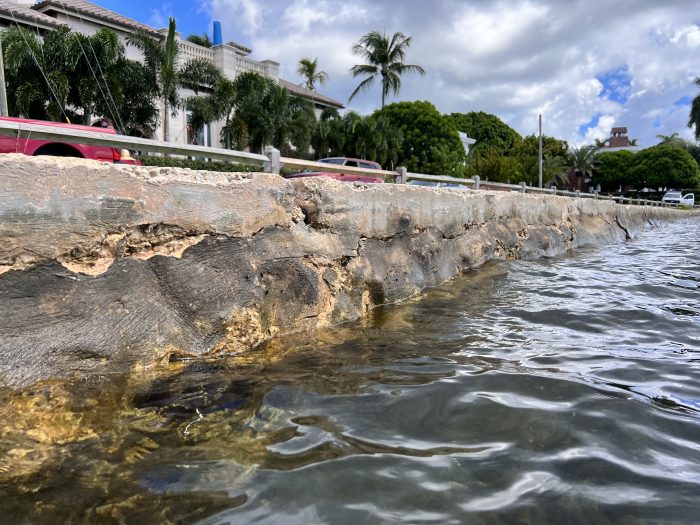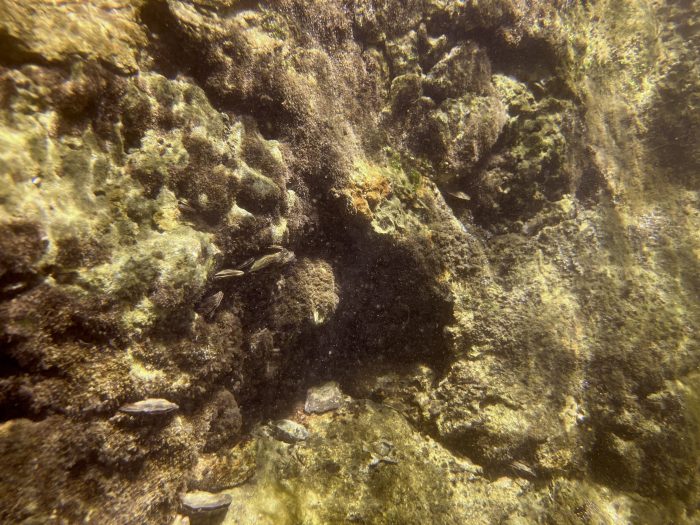
In coastal Florida (especially the eastern coast), structures used to protect residential shorelines from erosion along bays, harbors, and canals are all called "seawalls". This terminology is different from much of the rest of the country.


Some of these seawalls are vertical walls, often around 4 ft. tall. This one has had a coating applied to help extend its lifespan.

Others consist of stones that are piled onto sloped banks along the shoreline.
Many of these seawalls are constructed from coquina.
What is Coquina?
Coquina is a type of soil that contains a very high percentage of shells.
Thousands of years ago, the tiny coquina clam lived in the shallow waters of coastal Florida, as they still do today. These are the small pink, lavender, yellow, or white shells one sees along the beach at the waterline. As clams died, their shells accumulated in layers, year after year, century after century, for thousands of years, forming submerged deposits feet thick. During the last ice age, sea levels dropped, exposing these shell layers to air and rain. Eventually, the shell became covered with soil, then with trees and other vegetation. Rain water percolating through the dead vegetation and soil picked up carbon dioxide and became carbonic acid, the same ingredient that makes soda fizz.
As this weak acid soaked downward, it dissolved some of the calcium in the shells, producing calcium carbonate, which solidified in lower layers, in a manner similar to how stalactites form in caves. This material bonded the shell fragments together into a porous type of limestone now called coquina, which is Spanish for "tiny shell".
For many years coquina was very inexpensive and was widely used for seawalls. Over the years, increased coastal development and environmental concerns have resulted in significant rises in the cost of mining permits, resulting in coquina constantly becoming more expensive. Because of its now high price, few new seawalls are constructed from coquina. For this reason, coquina seawalls tend to be older, increasing the chance that they need – or will soon need – major repairs. Those buying a home with a coquina seawall in need of repair may find the cost of repairs to be high if they want to retain the coquina seawall.
